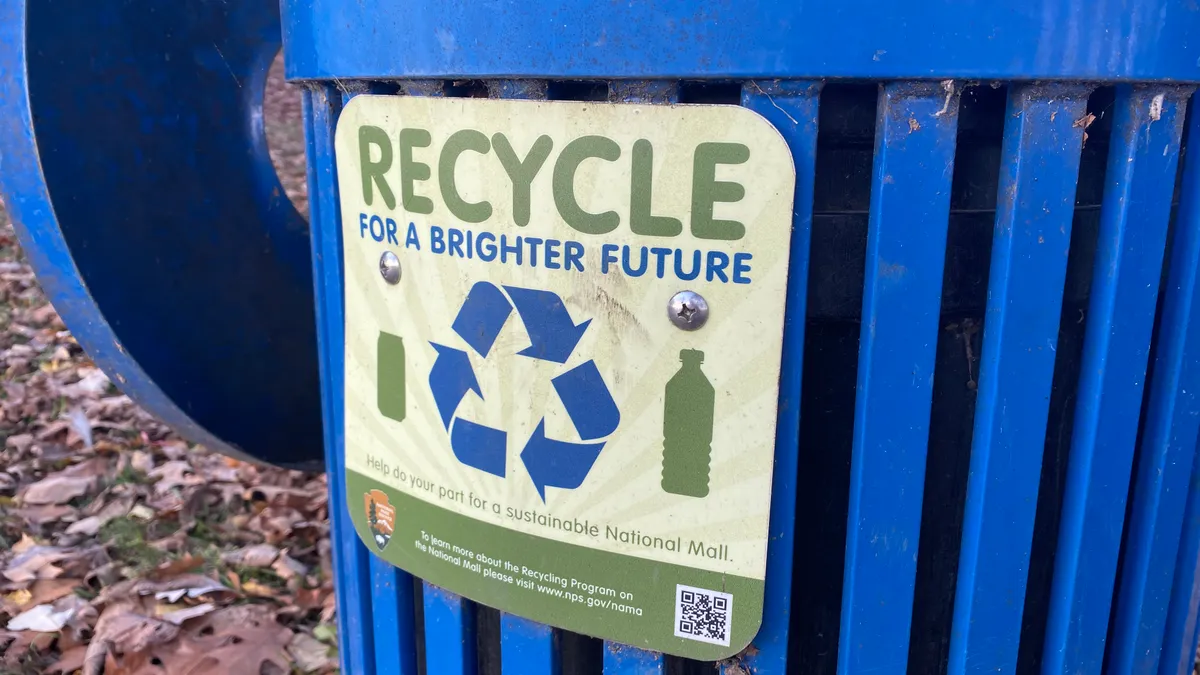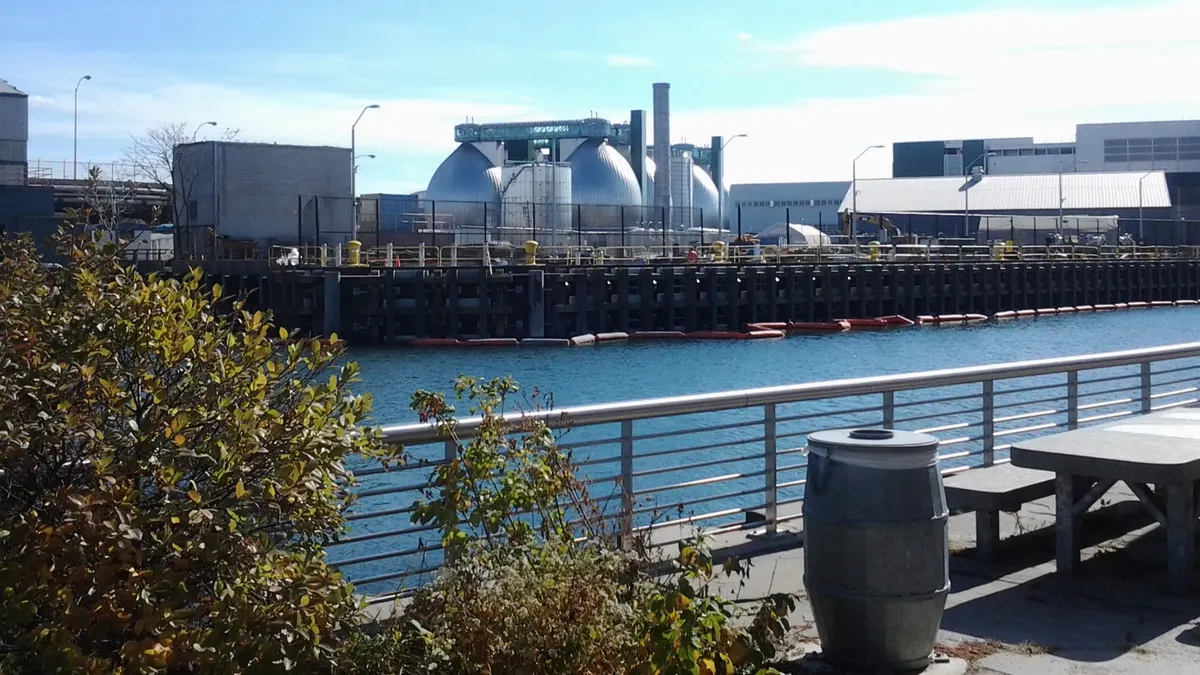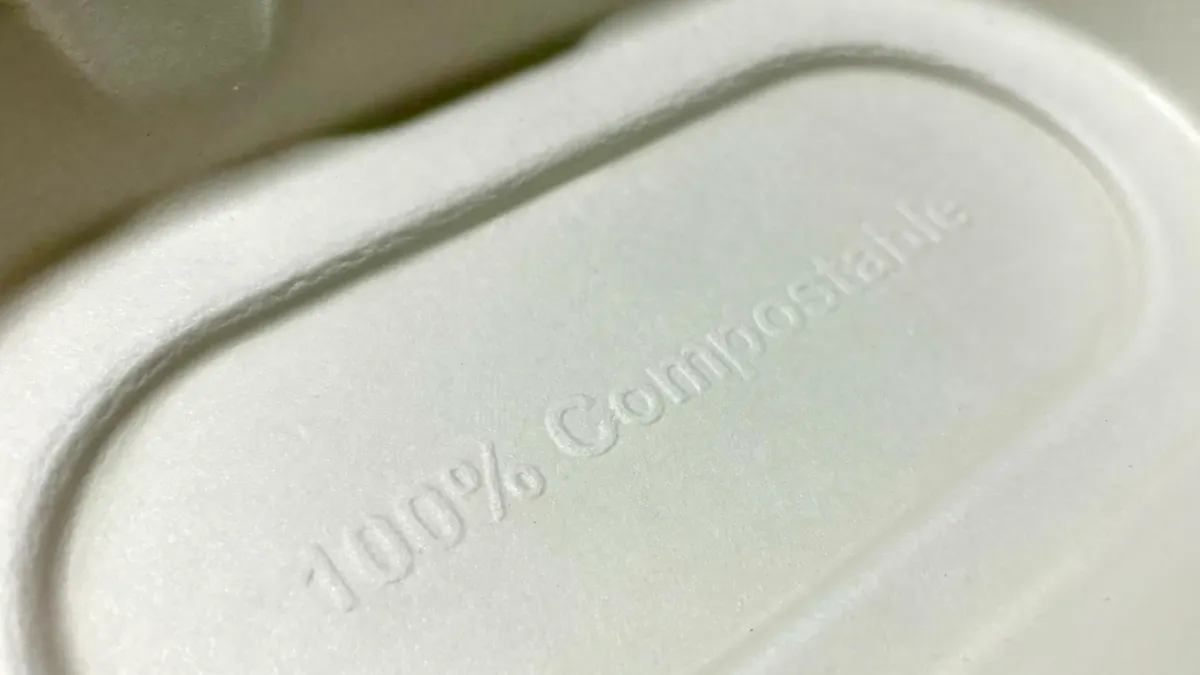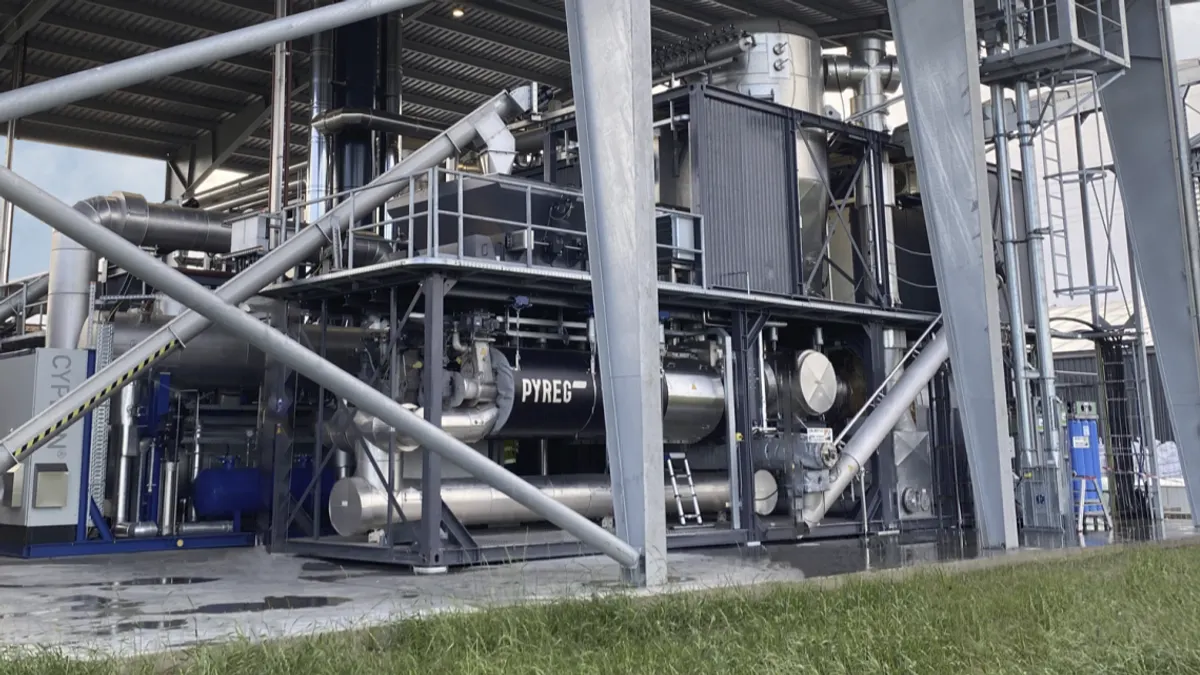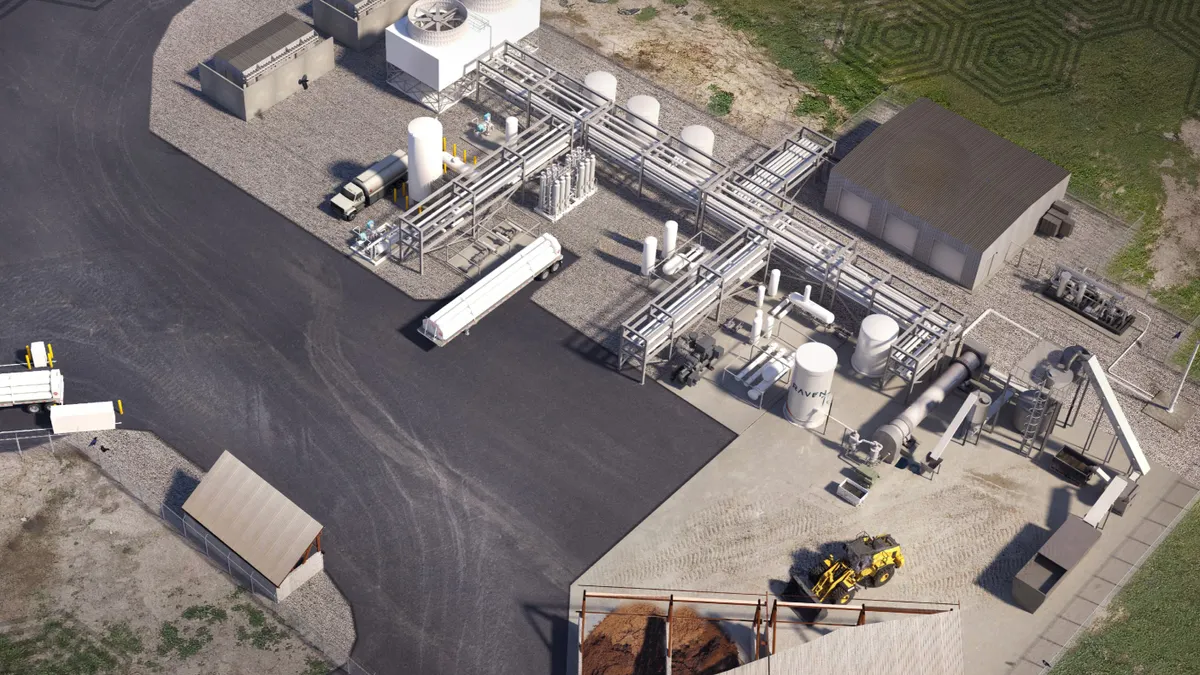Under the Tobin Bridge on the waterfront outskirts of Boston, Waste Management has been scaling up the latest example of its urban organics technology for nearly a year.
The Centralized Organic Recycling (CORe) facility is currently accepting about 50 tons per day of the region's residential and commercial food waste, with capacity for up to five times that much as demand increases. This is the third of four such facilities owned by the company — two are operational in New York and California, one is under construction in northern New Jersey — and more are expected in the future. Each is designed with a small footprint and the goal of extracting contaminants to create a bioslurry for digestion at regional wastewater treatment plants.
"People often underestimate the cost associated with collection of source-separated organics," said Eric Myers, Waste Management's director of organic recycling. "This is just another way to try to economically solve for what we as a society have decided is important and what our customers are asking for."
Waste Management currently has 40 composting facilities around the country. Though the size and attendant community relations factors involved often make them unfeasible for densely populated areas. The company explored the possibility of getting into the anaerobic digestion business years ago, but was turned off by the steep capital costs and long timeframe for permitting and construction. Seeing that many existing wastewater treatment facilities had underutilized capacity, and contamination was a growing challenge for source-separated organics, they decided to pursue the CORe concept instead.
"This is just another way to try to economically solve for what we as a society have decided is important and what our customers are asking for."

Eric Myers
Director of Organic Recycling, Waste Management
Existing state or local organics diversion requirements, and high disposal tip fees, were prime factors in how target cities were selected. CORe tip fees were designed to be the same or less than regional disposal options to help attract business. Each facility is a little different and Waste Management declined to disclose startup or capital costs. The first two were installed in existing buildings, and the Boston operation was built from scratch, allowing for more customized design choices.
The Boston system
Boston's CORe facility currently runs one shift per day, staffed by three workers. So far material has primarily come from Waste Management compactors in the area and collection routes serviced by local company Save That Stuff. The CORe is located next to Save That Stuff's MRF, on land leased from the company, in an industrial section of the city's Charlestown neighborhood.
On a normal day, the CORe team will see a wave of commercial trucks in the morning and another round of residential material from a curbside pilot in the nearby city of Cambridge later on. After coming through one of two quick-close doors, trucks tip their material on a sloped floor that captures liquids in a drain. All of this material, including whatever gets hosed off the trucks and the facility's interior, is then put through the CORe system too.
In some cases that may include large quantities of liquids from food processors. On a recent day, about a dozen pallets stacked with five-gallon buckets were waiting to be dumped out. The past-date mix of "roasted garlic peanut," "wasabi ginger" and "fiesta fajita" sauces would enter the system while the buckets would be recovered for recycling.
According to the company's area director for recycling, Chris Lucarelle, the CORe system is built to depackage other smaller products such as expired produce in plastic containers without manual separation.
“If it’s not glass we can remove the organic fraction and recover it," he said.
After the occasional manual check, this material is fed into a hopper and put through a proprietary mechanical sorting system to remove unwanted items such as utensils or packaging. Aside from a small amount of bones, rinds and stems all of the organic material is ground down. Based on current throughput, about 9% of what the Boston CORe receives is separated as residual for processing at a local waste-to-energy facility.
The rest gets mixed with water — or other organic waste liquids received at the facility — to create a special Engineered Bioslurry (EBS). Described as having the consistency of cooked oatmeal, this product is said to have a much higher energy output than the average material going through wastewater treatment plants. Though consistency is crucial.
"Those digesters like to get a very balanced diet of material, that’s when they perform their best, that’s when they generate the most energy," said Myers. "Whatever we do we can’t impact that process."
About 10,000 gallons of EBS per day are currently being trucked out for processing. The original plan was to send this to a treatment plant on Boston's Deer Island, but that was scrapped after opposition from a neighboring community. Instead, Waste Management is doing a five-year pilot with the Greater Lawrence Sanitary District about 30 miles north. Based on positive feedback so far, the district aims to expand this project in the future. Waste Management's facility is ready, with empty space for a second 60,000-gallon EBS tank in addition to an existing 26,000-gallon water tank.
The facility has few other features aside from a small office with basic lab equipment for EBS testing. Because this was the first CORe building built from scratch it was designed to be compact. As the technology evolves in New Jersey and perhaps other locations each CORe will be a little different.
"It’s not out of the box," said Lucarelle. "Some of it is art. Some of it is science."
Scaling up
With a statewide diversion mandate in place for commercial establishments generating one ton or more of organic material per week, Massachusetts offers many opportunities for systems such as the CORe to attract more business. Talk of additional mandates for smaller businesses in the future, and new "zero waste" discussions in cities such as Boston, may help generate further interest.
According to a 2016 study from the state's Department of Environmental Protection, a growing number of businesses and residents are also choosing to pay for organics collection voluntarily. These services range in scale from local composting operations collecting buckets in their vans to a worker-owned company with a small fleet to other service providers exporting material as far north as Maine.
The needs of each customer differ, though contamination is an ever-present factor. This sparked bad press for Save That Stuff last summer when the owner of a local restaurant chain that prides itself on sustainability called them out for not properly communicating about what material could be composted.
For the cities and states where CORe is already operating, organics diversion is seen as a critical piece of hitting recycling or diversion rate targets. These types of pre-processing systems can help ensure higher quality material and avoid any bad publicity that may diminish consumer confidence. As food waste diversion gains momentum more systems that can help address this problem without taking up too much space could become a popular option for urban areas.






